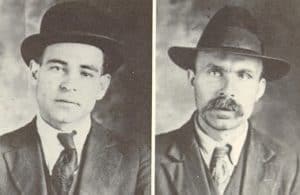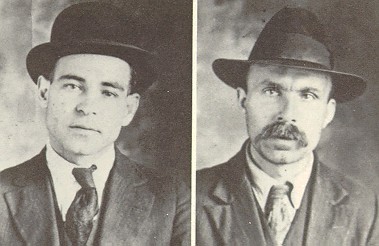 I was lucky enough to have been chosen to attend, and recently graduate from, the Massachusetts Municipal Association’s Certificate in Local Government Leadership program. This educational certification program, offered through the Association in conjunction with Suffolk University to municipal employees across the state, taught me about many facets of municipal government. We covered topics ranging from human resource management, to municipal leadership, to municipal finance, and tackled tough subjects like local police reform, and intermunicipal relationships. The certificate program was an enlightening experience, and I got to learn from some of the top leaders in municipal government today, and I’m beyond thankful to the Town of Norwood for their support and the opportunity to attend the program.
I was lucky enough to have been chosen to attend, and recently graduate from, the Massachusetts Municipal Association’s Certificate in Local Government Leadership program. This educational certification program, offered through the Association in conjunction with Suffolk University to municipal employees across the state, taught me about many facets of municipal government. We covered topics ranging from human resource management, to municipal leadership, to municipal finance, and tackled tough subjects like local police reform, and intermunicipal relationships. The certificate program was an enlightening experience, and I got to learn from some of the top leaders in municipal government today, and I’m beyond thankful to the Town of Norwood for their support and the opportunity to attend the program.
However, I will admit that during one of my assignments, I found myself going a bit off course, and becoming fascinated by a somewhat off topic subject. It was during one of my assignments, in which I was tasked to explore the history of my local community (Braintree) that I unearthed a local historic event of great significance and international magnitude that I, despite living in the Norfolk County area my entire life, had never heard of before. I found myself mesmerized by this new (to me) landmark local historical event, and delved further and further into the events history and the details and drama that surrounded it. (Don’t worry, I got back on track eventually!) That historic event was known as the Sacco and Vanzetti Trial.
As chronicled in the documentary Sacco and Vanzetti, which you can watch now though the library’s Kanopy streaming app, Nicola Sacco and Bartolomeo Vanzetti were Italian immigrants who immigrated to the U.S. in 1908. Like many immigrants, both came to America seeking new opportunities, and were allured by the promise of the American Dream. However, the then recent Russian Revolution, which saw the Russian Empire turn into the Union of Soviet Socialist Republic (U.S.S.R.), created what was known as the “Red Scare” in the hearts of many Americans. The Red Scare was brought about by a general fear that a communist revolution could happen in America, as it did in the Soviet Union. The Red Scare also instilled in the American public a fear of foreigners, in particular Italian Immigrants, who not only were coming to America at an accelerated rate during this time, but who were often less educated (meaning they were competing for jobs and housing with other American immigrant communities) and held a religious affiliation to Roman Catholicism, which not only was a religious minority in America during the time, but also clashed with the Protestant American majority.
On April 15th, 1920, at the Slater Morrill Shoe Company factory on Pearl St. in Braintree (now Pearl Plaza), two men, Alessandro Berardelli, a security guard, and Frederick Parmenter, a paymaster (an agent whose duty is to make payments to workers) were robbed and killed while handling two steel boxes of the company’s payroll. Berardelli was shot four times, and Parmenter was shot two times, one time in the chest, the other in the back, presumably while he was trying to flee. The assailants fired at the workers of the shoe company, and sped off in a Buick with the money. The police had a few suspects at the time, but ultimately chose Sacco and Vanzetti as their prime suspects in the case. Sacco and Vanzetti were chosen based on the rather dubious facts that Sacco owned a gun similar to what the robbers used, and both were found in a car shop getting a car from a repair shop that was seen near the South Braintree crime scene. Many historians believe that they were chosen because they were Italian minorities, and their limited English skills made it hard for them to defend themselves, and due to the fact that they were open anarchists who opposed all forms of government.
Sacco and Vanzetti’s trial at the Dedham court house drew little attention, but, as a source from our Gale in Context U.S. History database explains, “over the next 6 years Moore, William G. Thompson (who became chief defense counsel after Moore left), and the Sacco-Vanzetti Defense Committee (an array of anarchists, Boston free-thinkers from prestigious families, and middle-class liberals and radicals) reshaped the public image of the case into a political and ideological rather than a legal controversy… This strategy increasingly mobilized public sentiment as years passed and doubts multiplied regarding portions of the evidence. “The trial began to morph beyond an issue of crime and innocence, and instead became about racial and political persecution. The presiding Judge, Webster Thayer, was criticized both for his bias both on and off the bench, for denying Sacco and Vanzetti’s Defense Attorney’s motions, berating the defense attorney and the two men (he said he would “get them good and proper”) and making statements about Sacco and Vanzetti’s political affiliation (calling them “Bolsheviki!”). The trial became noticed by not only the nation, but the world, with strikes and protests in favor of Sacco and Vanzetti’s innocence and release in countries like Germany, England, Australia, Paraguay and Mexico, to name a few. None of this did them any good, however, and ultimately the Massachusetts Supreme Judicial Court affirmed the convictions and on April 9th 1927, Judge Webster Thayer denied them a retrial, and sentenced Sacco and Vanzetti to die in the electric chair.
So much about this case resonated with me, and I became quite ashamed that I had never heard of this case before. Ironically, it took a great program like the MMA’s Local Government Leadership program, in which students learn how to be better municipal leaders and servants, for me to unearth a case that represented in essence the very antithesis of what we were learning in class. We all know the saying, “those who cannot learn from history are doomed to repeat it,” and though I can only capture a small portion of the Sacco and Vanzetti drama in this article, I encourage you to explore the details and learn further about it. Whether you are a newcomer to the trial (like me) or are well acquainted with it, it serves as a valuable reminder of the dangers of fear, xenophobia, and political prejudice that can taint our hearts and our political systems if left unchecked. I’ll leave you with a final excerpt taken from an article in our database about the case…
“The Sacco and Vanzetti case remains a tragic chapter in United States history. The case has come to stand for the type of racial bigotry and breach of human rights the United States Constitution is to protect against. The legacy of Sacco and Vanzetti serves to protect others from racial and political prosecution.”
Want to learn more about the case?
- Check out our U.S. History Database
- Watch the Sacco and Vanzetti Documentary on Kanopy
- Borrow the DVD Sacco and Vanzetti movie from the library
Brian DeFelice is the Information Technology Librarian at the Morrill Memorial Library in Norwood, MA. Look for his article in the June 24, 2021 issue of the Transcript and Bulletin.




